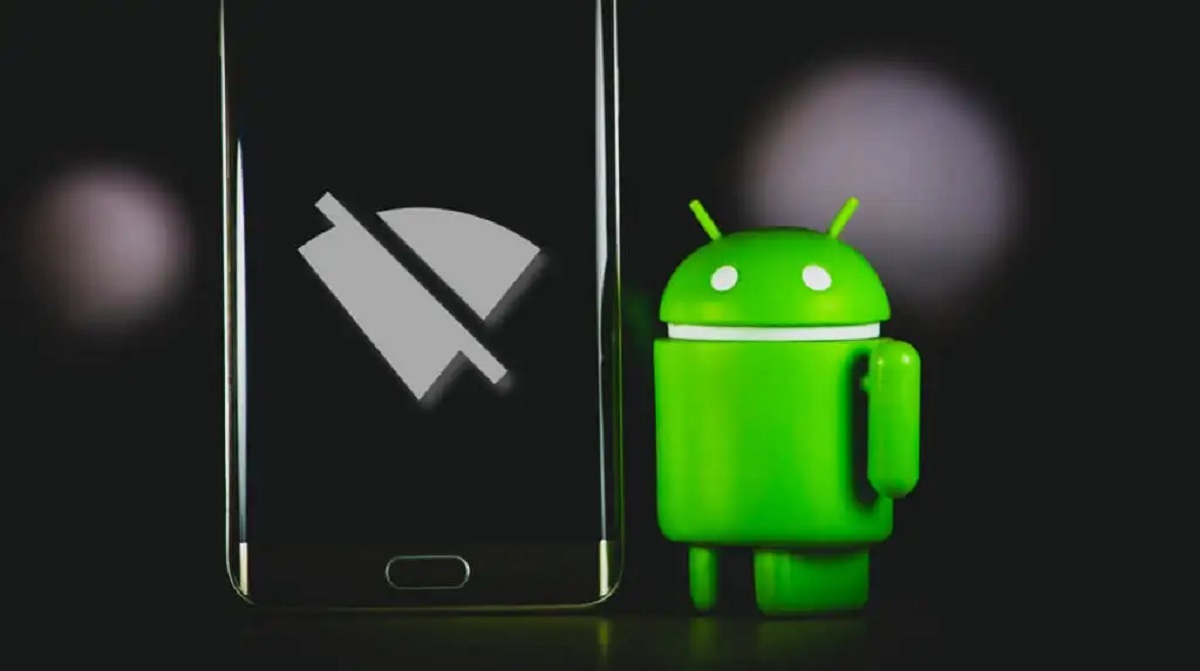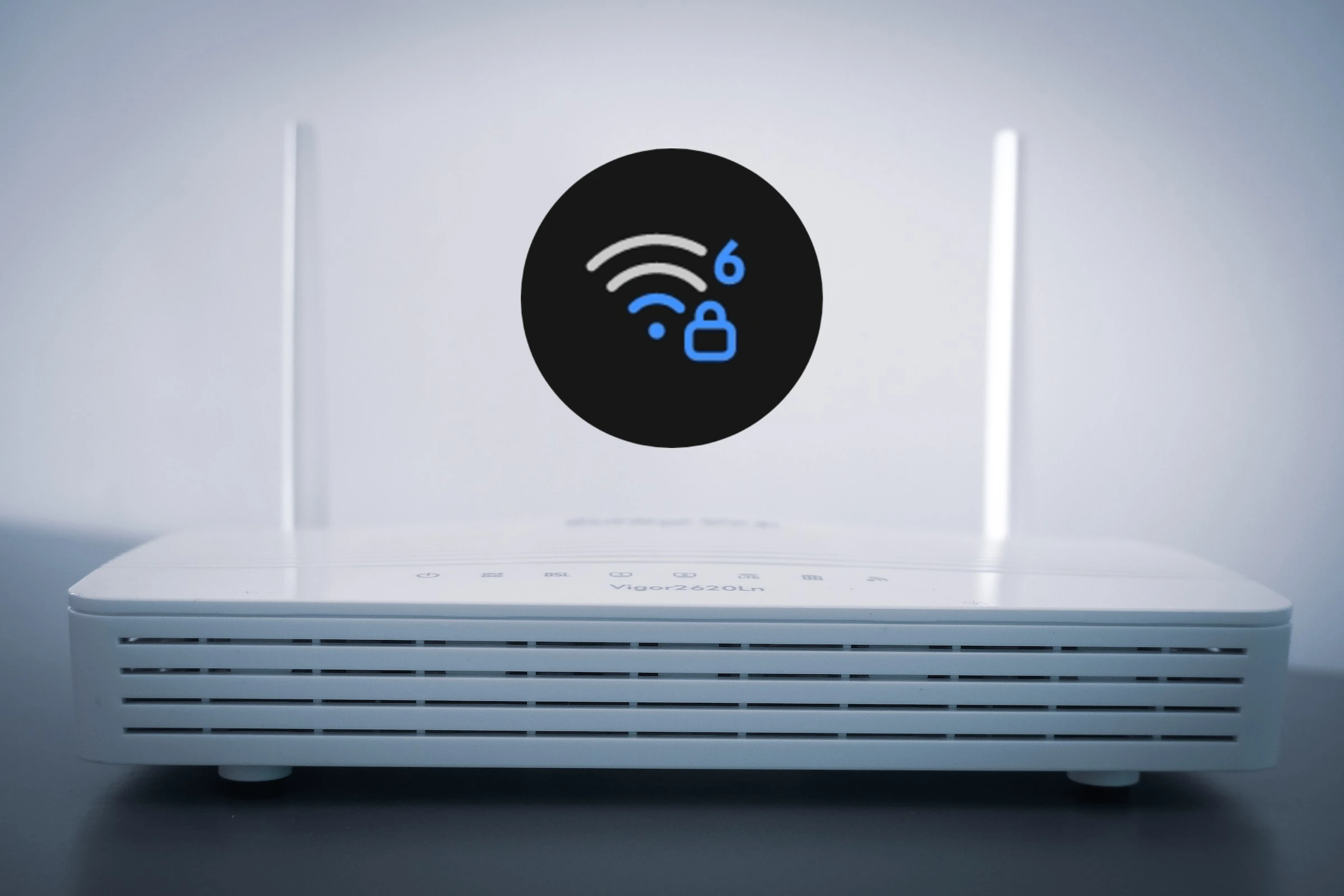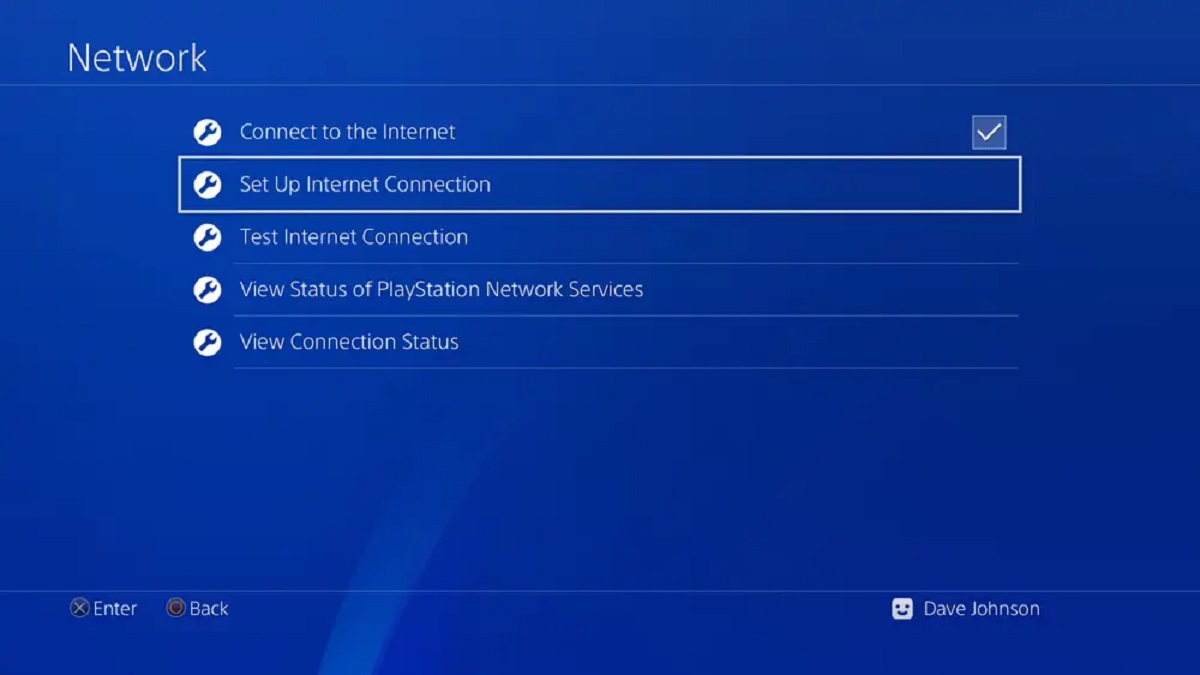Introduction
With the increasing reliance on smartphones for communication, entertainment, and productivity, having a reliable internet connection has become essential. Many of the features and functionalities on our phones require an internet connection to work properly. While mobile data services provide internet connectivity on the go, some may wonder why their phones seemingly don’t function without Wi-Fi. In this article, we will explore the reasons behind this phenomenon and understand why our phones need Wi-Fi to fully utilize their capabilities.
Wi-Fi, short for Wireless Fidelity, has become widely available in homes, offices, and public spaces. It allows devices to connect to the internet wirelessly, without the need for a physical wired connection. While we are accustomed to using Wi-Fi on our laptops, tablets, and other devices, the dependence of our smartphones on Wi-Fi connectivity may raise questions. To understand this, we need to delve into the basic functions of a phone and how it connects to the internet.
Our phones are equipped with various features that enable us to make calls, send messages, access applications, browse the web, and more. To perform these functions, a phone requires a cellular network connection provided by a mobile service provider. This network connection allows us to make calls and send texts, using a technology like 3G, 4G, or 5G. However, when it comes to accessing the internet and using data-intensive applications, our phones rely on a Wi-Fi network.
What is Wi-Fi?
Wi-Fi, a term that has become synonymous with wireless internet connectivity, is a technology that allows devices to connect to a local network and access the internet without the need for wired connections. It works by utilizing radio waves to transmit and receive data between devices and a wireless router.
Wi-Fi operates on the 2.4 GHz or 5 GHz frequency bands, offering fast and reliable internet access within a certain range. It has become a ubiquitous feature in homes, public spaces, and businesses, providing convenience and flexibility in connecting various devices to the internet.
When you have a Wi-Fi connection available, your phone can connect to the local network, allowing you to access the internet and perform various online activities. This includes browsing the web, streaming videos, using social media applications, downloading files, and much more. Wi-Fi connectivity enables faster data transfer speeds compared to cellular networks and can significantly enhance the overall user experience.
Wi-Fi networks are typically secured with a password to ensure only authorized users can connect to them. This security measure helps protect your personal information and safeguards against unauthorized access. It’s important to connect to trusted and secure Wi-Fi networks to maintain the privacy and security of your data.
With the proliferation of Wi-Fi-enabled devices, including smartphones, tablets, laptops, and smart home devices, having a stable and reliable Wi-Fi connection has become crucial. It allows seamless integration between these devices, enabling you to share files, stream media, and control your connected devices conveniently.
In the next sections, we will explore how Wi-Fi works, the basic functions of a phone, and why your phone needs Wi-Fi connectivity to fully utilize its capabilities.
How Does Wi-Fi Work?
Wi-Fi technology relies on a set of standards and protocols that enable devices to wirelessly connect to a network and access the internet. Here’s a simplified breakdown of how Wi-Fi works:
- Wireless Router: A wireless router acts as the central hub for a Wi-Fi network. It connects to an internet source, such as a modem or an internet service provider (ISP), and broadcasts wireless signals within a certain radius.
- SSID and Password: The router emits a service set identifier (SSID), which is the name of the Wi-Fi network. When you want to connect a device to the network, you need to select the appropriate SSID and enter the password (if required) to establish a connection.
- Radio Waves: Wi-Fi uses radio waves to transmit and receive data. These radio waves operate on different frequency bands, typically 2.4 GHz or 5 GHz, and are able to penetrate walls and other obstacles to provide connectivity within a certain range.
- Wireless Network Interface: Devices, such as smartphones, tablets, or laptops, have wireless network interfaces (Wi-Fi chips) that allow them to detect and connect to nearby Wi-Fi networks. These interfaces communicate with the wireless router to establish a connection.
- Internet Service Provider: The router connects to the internet through an internet service provider (ISP). The ISP provides the router with an internet connection via various means, such as DSL, cable, or fiber optic lines.
Once a device is connected to a Wi-Fi network, it can transmit and receive data over the wireless connection. This data can include web page requests, file transfers, streaming media, and other internet-based communication.
Wi-Fi networks have evolved over the years, with newer standards like Wi-Fi 6 offering faster speeds, better performance, and increased capacity to accommodate the growing number of connected devices. These advancements have contributed to a more seamless and robust wireless connectivity experience.
Now that we have a basic understanding of how Wi-Fi works, let’s delve into the essential functions of a phone and explore why Wi-Fi connectivity plays a crucial role in its overall functionality.
Basic Functions of a Phone
A phone, whether it’s a traditional feature phone or a modern smartphone, serves as a portable communication and computing device. It offers a wide range of functions that allow us to stay connected, access information, and perform various tasks on the go. Here, we will discuss some of the basic functions that phones provide:
- Calls and Messaging: One of the primary functions of a phone is to make calls and send text messages. It uses cellular network connectivity provided by mobile service providers to establish voice communication with other phone users.
- Contacts and Address Book: Phones allow us to save and manage our contacts, making it easy to find and communicate with individuals in our network.
- Calendar and Alarm: Phones feature built-in calendars and alarm clocks to help us manage our schedules and stay organized.
- Camera and Media: Most modern phones come equipped with cameras that enable us to capture photos and videos. They also serve as media players, allowing us to enjoy music, videos, and other multimedia content.
- Internet Browsing: Phones offer web browsing capabilities, allowing us to access websites, search for information, and browse online content.
- Applications and App Stores: Phones provide access to a wide range of applications, or apps, which can be downloaded and installed from app stores. These apps enhance the functionality of the phone and offer various services, such as social networking, productivity tools, gaming, and entertainment.
- Maps and Navigation: Phones have integrated GPS capabilities, enabling us to use navigation apps and find directions to a specific location.
- Email and Messaging Apps: Phones allow us to access our emails and use messaging apps to stay in touch with friends, family, and co-workers.
- Social Media: Many people use their phones for social media engagement, accessing platforms like Facebook, Instagram, Twitter, and more.
These are just some of the basic functions that phones offer. With advancements in technology, phones have become increasingly sophisticated, offering a wide array of features and capabilities that cater to our ever-evolving needs.
In the next section, we will explore the relationship between internet connectivity and phone service, shedding light on why phones require Wi-Fi to fully utilize their capabilities.
Internet Connection and Phone Service
In today’s connected world, having an internet connection is crucial for accessing and utilizing the full potential of our smartphones. While phone service provides the ability to make calls and send text messages, it typically does not include a reliable and high-speed internet connection. This is where Wi-Fi comes into play.
Phone service, provided by mobile carriers, relies on cellular network technology to establish communication between devices. This network allows users to make calls and send texts using cellular frequencies. However, when it comes to accessing the internet and using data-intensive applications, the limitations of cellular networks become apparent.
Cellular networks have bandwidth limitations and may experience congestion in heavily populated areas. This can result in slower data speeds and inconsistent internet connectivity. Additionally, cellular data plans often impose restrictions on data usage or charge additional fees for exceeding data limits.
On the other hand, Wi-Fi connectivity can provide faster internet speeds and a more stable connection, especially when connected to a high-speed and reliable Wi-Fi network. Wi-Fi networks are often available in homes, offices, public spaces, and even some outdoor areas, offering more flexibility in accessing the internet and performing data-intensive tasks.
When your phone is connected to a Wi-Fi network, it can utilize its full range of capabilities, such as browsing the internet, streaming videos, downloading files, and using various applications, without relying solely on cellular data. This not only enhances the overall user experience but also helps conserve cellular data usage for when Wi-Fi is not available.
It’s important to note that some phone service providers may offer data plans that include a certain amount of data specifically for internet usage. These plans allow you to access the internet and use data-dependent applications even without a Wi-Fi connection. However, they may have limitations on data speed or impose additional charges for exceeding data limits.
By utilizing Wi-Fi connectivity whenever possible, you can ensure a more seamless and efficient internet experience on your phone. The next sections will further explore the benefits and limitations of using Wi-Fi on your phone, as well as common issues that may arise with phone connectivity.
Why Does My Phone Need Wi-Fi?
Wi-Fi has become an integral part of our daily lives, and our smartphones heavily rely on Wi-Fi connectivity for several reasons. Let’s explore why your phone needs Wi-Fi:
- Faster and Stable Internet: Wi-Fi networks generally offer faster and more stable internet connectivity compared to cellular data. This is especially beneficial when streaming videos, downloading large files, or browsing websites with data-heavy content.
- Cost Savings: Using Wi-Fi instead of cellular data can help save on data charges, especially if you have limited data plans or live in an area with expensive or unreliable cellular network coverage.
- Unlimited Data Usage: Wi-Fi networks often come with unlimited data usage, allowing you to browse, download, and stream as much content as you want without worrying about exceeding data limits or facing additional charges.
- Better Battery Life: When connected to Wi-Fi, your phone can offload data transfers from cellular networks to Wi-Fi, which can help conserve battery life. Wi-Fi connectivity typically requires less power than cellular data connections.
- Larger Data Limit: Wi-Fi networks often have larger data limits compared to cellular data plans. This enables you to download large files, stream high-definition videos, and engage in data-intensive activities without constraints.
- Improved Signal Strength: In certain areas with weak cellular network coverage, Wi-Fi networks can provide better signal strength, ensuring reliable internet connectivity on your phone.
- Seamless Device Integration: Wi-Fi connectivity allows seamless integration between your phone and other devices on the same network. You can easily share files, sync data, and control smart home devices using your phone.
While Wi-Fi offers numerous benefits, it’s important to remember that it does have limitations. Its range is typically confined to a specific area, and you need to be within the range of a Wi-Fi network to access its benefits. Additionally, connecting to public Wi-Fi networks may pose security risks, so it’s crucial to exercise caution and connect to trusted networks with proper security measures.
In the next section, we will further explore the limitations of using Wi-Fi on your phone and discuss common issues that may arise with phone connectivity.
Benefits of Using Wi-Fi on a Phone
Using Wi-Fi on your phone offers numerous benefits that enhance your overall mobile experience. Let’s explore some of the key advantages of using Wi-Fi:
- Faster Internet Speeds: Wi-Fi networks generally provide faster internet speeds compared to standard cellular data connections. This enables quicker website loading, faster file downloads, and smoother streaming of videos and music.
- Cost Savings: By connecting to Wi-Fi networks, you can reduce your reliance on cellular data and save on data charges. Wi-Fi is often available for free in public spaces, such as cafes, libraries, and airports, allowing you to access the internet without incurring additional expenses.
- Unlimited Data Usage: Wi-Fi networks typically offer unlimited data usage, allowing you to browse the internet, stream media, use social media, and download files without being restricted by data limits.
- Improved Connection Stability: Cellular signals can be affected by factors such as distance from cell towers and obstacles like buildings and trees. Wi-Fi connections, on the other hand, are more stable and reliable within the range of the network, providing a consistent and uninterrupted internet experience.
- Multi-Device Connectivity: Wi-Fi networks allow multiple devices to connect simultaneously, enabling seamless integration between your smartphone, tablet, laptop, and other Wi-Fi enabled devices. You can easily share files, sync data, and collaborate across devices.
- Better Quality Voice and Video Calls: Wi-Fi can improve the quality of voice and video calls, especially when using apps like Skype, FaceTime, or WhatsApp. The higher bandwidth provided by Wi-Fi networks ensures clearer audio and smoother video playback.
- Seamless Streaming and Gaming: Wi-Fi’s high-speed internet access offers optimal conditions for streaming movies, TV shows, and music on your phone. It also provides a smooth gaming experience by reducing latency and enhancing online multiplayer capabilities.
- Backup and Syncing: Wi-Fi connectivity enables automated backups and syncing of your device to cloud services. This ensures that your important files, photos, and documents are securely stored and readily accessible across devices.
These are just a few of the benefits that Wi-Fi connectivity brings to your phone. By taking advantage of Wi-Fi networks whenever available, you can enjoy faster internet speeds, cost savings on data charges, and seamless integration with other devices.
However, it’s essential to be cautious when connecting to public Wi-Fi networks, as they may expose you to security risks. We will discuss common issues with phone connectivity and provide troubleshooting tips in the next section.
Limitations of Wi-Fi on a Phone
While Wi-Fi on a phone offers numerous benefits, it also comes with certain limitations. It is important to be aware of these limitations to effectively manage your phone’s connectivity. Here are some key limitations to consider:
- Range Limitation: Wi-Fi networks have a limited range, and your phone needs to be within the proximity of a Wi-Fi router to connect. If you move too far away from the router or go out of range, your Wi-Fi signal strength may weaken, leading to reduced internet speeds or connection drops.
- Dependence on External Networks: Wi-Fi on a phone relies on external Wi-Fi networks for connectivity. If you are in an area without Wi-Fi coverage or if the available networks are unreliable, your phone’s internet access may be limited or unavailable until you find a suitable Wi-Fi network.
- Security Risks: Public Wi-Fi networks, such as those found in cafes or airports, can pose security risks. These networks are often unencrypted, making your data vulnerable to interception by malicious individuals. It is essential to take precautions, such as avoiding sensitive transactions and using a virtual private network (VPN), when connecting to public Wi-Fi networks.
- Maintenance and Network Issues: Wi-Fi networks, like any technology, can encounter maintenance or network-related issues. This may result in downtime or intermittent connectivity problems, hindering your ability to use Wi-Fi on your phone. These issues can be caused by factors such as router malfunctions, network congestion, or external factors that impact signal transmission.
- Impact on Battery Life: Constantly searching for and connecting to Wi-Fi networks can have an impact on your phone’s battery life. While Wi-Fi generally consumes less power compared to cellular data, the continuous scanning and authentication processes may still contribute to battery drain.
- Compatibility with Legacy Devices: Older phones with outdated Wi-Fi technology may encounter compatibility issues with newer Wi-Fi networks. They may not support the latest standards, resulting in slower connection speeds or the inability to connect to certain networks.
Despite these limitations, Wi-Fi connectivity on a phone remains a valuable and widely used feature. It provides fast and reliable internet access, cost savings, and seamless device integration. By understanding these limitations, you can effectively manage your phone’s Wi-Fi connectivity and make the most of its benefits.
In the next section, we will address common issues that may arise with phone connectivity and provide troubleshooting tips to help you resolve these problems.
Common Issues with Phone Connectivity
While smartphones have become an integral part of our lives, connectivity issues can sometimes arise, causing frustration and inconvenience. Here are some common issues that people may face with phone connectivity:
- Wi-Fi Network Not Found: Sometimes, your phone may fail to detect available Wi-Fi networks. This can be due to distance from the router, network interference, or a problem with your phone’s Wi-Fi settings.
- Weak Wi-Fi Signal: Weak Wi-Fi signals can result in slow internet speeds or frequent connection drops. This can occur if you are too far away from the router or if there are obstacles, such as walls or electronic devices, disrupting the signal.
- Authentication or Connection Issues: You may encounter difficulties when trying to connect to a Wi-Fi network due to incorrect passwords, network authentication problems, or compatibility issues between your phone and the network.
- Slow Internet Speeds: Even when connected to Wi-Fi, you may experience slow internet speeds. This can be caused by network congestion, interference from other devices, or limitations in the internet service itself.
- Intermittent Connection Drops: Your phone’s Wi-Fi connection may drop intermittently, causing disruptions during downloads, streaming, or online activities. This can be caused by issues such as router interference, network overload, or firmware/software problems.
- Network Authentication Errors: If you are connecting to a Wi-Fi network that requires a login or authentication, you may encounter errors or difficulty in establishing a connection. This can be due to incorrect login credentials or issues with the network’s authentication system.
- Router or Modem Issues: Problems with the router or modem can affect your phone’s ability to connect to Wi-Fi. These issues can include firmware errors, hardware malfunctions, or incorrect configurations.
- Software or Firmware Bugs: Occasionally, software or firmware bugs within your phone’s operating system or Wi-Fi components can lead to connectivity issues. In such cases, updating your phone’s software or performing a reset may resolve the problem.
- Network Provider or Service Outages: Sometimes, connectivity issues may be caused by network provider problems or service outages in your area. In such cases, it’s best to contact your service provider for assistance and updates.
If you encounter any of these issues with your phone’s connectivity, there are several troubleshooting steps you can try. These include restarting your phone, resetting network settings, updating software, checking Wi-Fi router settings, and ensuring that your phone’s Wi-Fi components are functioning correctly.
By identifying and addressing these common connectivity issues, you can enjoy a more seamless and reliable Wi-Fi experience on your phone.
Troubleshooting Wi-Fi Connectivity Problems
Wi-Fi connectivity issues can be frustrating, but many common problems can be resolved with some troubleshooting steps. Here are some tips to help you troubleshoot Wi-Fi connectivity problems on your phone:
- Restart your phone: Sometimes, simply restarting your phone can resolve temporary connectivity issues. Power off your device, wait a few seconds, and then power it back on.
- Check Wi-Fi settings: Verify that Wi-Fi is enabled on your phone. Open the Wi-Fi settings and ensure that it is toggled on. Also, check if your phone is set to connect to available networks automatically.
- Forget and reconnect to the network: If you are having trouble connecting to a specific Wi-Fi network, try forgetting the network in your Wi-Fi settings and then reconnecting. This can help resolve authentication or configuration issues.
- Move closer to the router: If you are experiencing weak Wi-Fi signal or frequent disconnections, try moving closer to the router. Physical obstacles like walls and interference from other devices can weaken the Wi-Fi signal, and being nearer to the router can improve connectivity.
- Restart the router: Power cycling the router can help resolve temporary issues. Disconnect the power supply from the router, wait for a few seconds, and then reconnect the power. Allow the router to restart fully before attempting to reconnect your phone.
- Check Wi-Fi password: Confirm that you are entering the correct password to connect to the Wi-Fi network. If you are unsure, you can check the password by accessing the router’s settings through a web browser on a connected device.
- Update software: Make sure your phone’s software is up to date. Software updates often include bug fixes and improvements that can address Wi-Fi connectivity issues. Check for any available updates in your phone’s settings.
- Reset network settings: Resetting your phone’s network settings can help resolve more complex Wi-Fi issues. Note that this action will remove saved Wi-Fi networks and their passwords, so you will need to reconnect to them manually.
- Contact your service provider: If you have tried these troubleshooting steps and are still experiencing Wi-Fi connectivity problems, it may be worth reaching out to your internet service provider or phone manufacturer for further assistance.
By following these troubleshooting tips, you can address many of the common Wi-Fi connectivity problems you may encounter on your phone. Keep in mind that Wi-Fi issues can sometimes be specific to your network or device, so it’s important to adapt these steps based on your situation.
If the problem persists or if you suspect a hardware issue with your phone’s Wi-Fi components, it may be necessary to seek professional assistance or contact the manufacturer for further support.
Conclusion
Wi-Fi connectivity plays a vital role in maximizing the capabilities of our phones. It enables faster internet speeds, cost savings on data charges, and seamless device integration. By understanding the importance of Wi-Fi and the limitations it brings, we can effectively manage our phone’s connectivity and enjoy a more reliable and efficient mobile experience.
Wi-Fi networks offer numerous benefits, including faster and more stable internet, cost savings, unlimited data usage, and improved battery life. They allow seamless device integration, enhance voice and video calls, and provide an optimal environment for streaming and gaming.
However, Wi-Fi also has limitations, such as range constraints, dependence on external networks, security risks, and potential battery drain. It’s important to be aware of these limitations to make informed decisions and manage your phone’s connectivity effectively.
In cases where Wi-Fi connectivity issues arise, troubleshooting steps, such as restarting your phone, checking settings, reconnecting to networks, and verifying Wi-Fi passwords, can often resolve common problems. However, if the issues persist, contacting your service provider or seeking professional assistance may be necessary.
With a reliable Wi-Fi connection, your phone becomes a powerful tool for communication, productivity, and entertainment. Whether you’re browsing the web, streaming media, using applications, or connecting with others, Wi-Fi enhances your mobile experience and keeps you connected to the digital world.
As technology continues to evolve, we can expect further advancements in Wi-Fi connectivity, expanding its capabilities and improving its performance. By staying up to date with the latest developments and best practices, we can ensure that we make the most of our phone’s Wi-Fi capabilities.

























